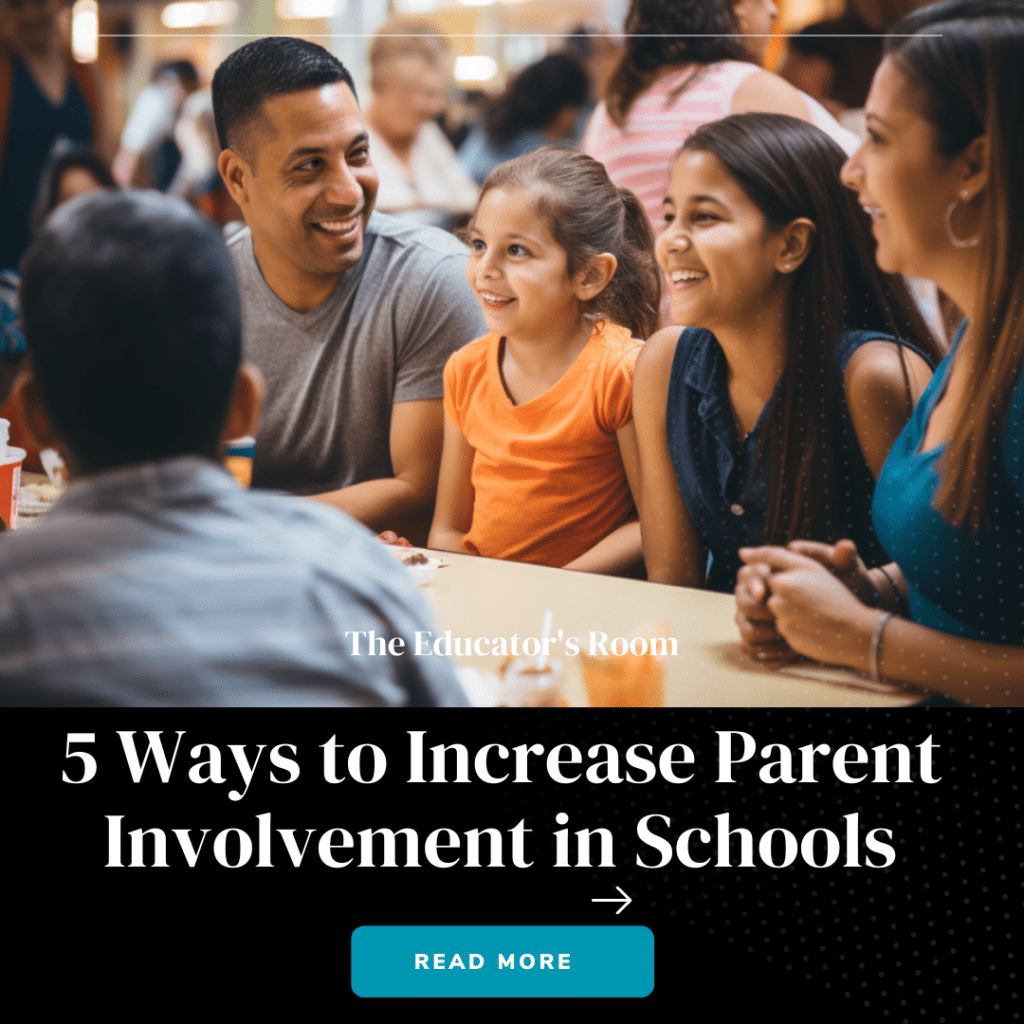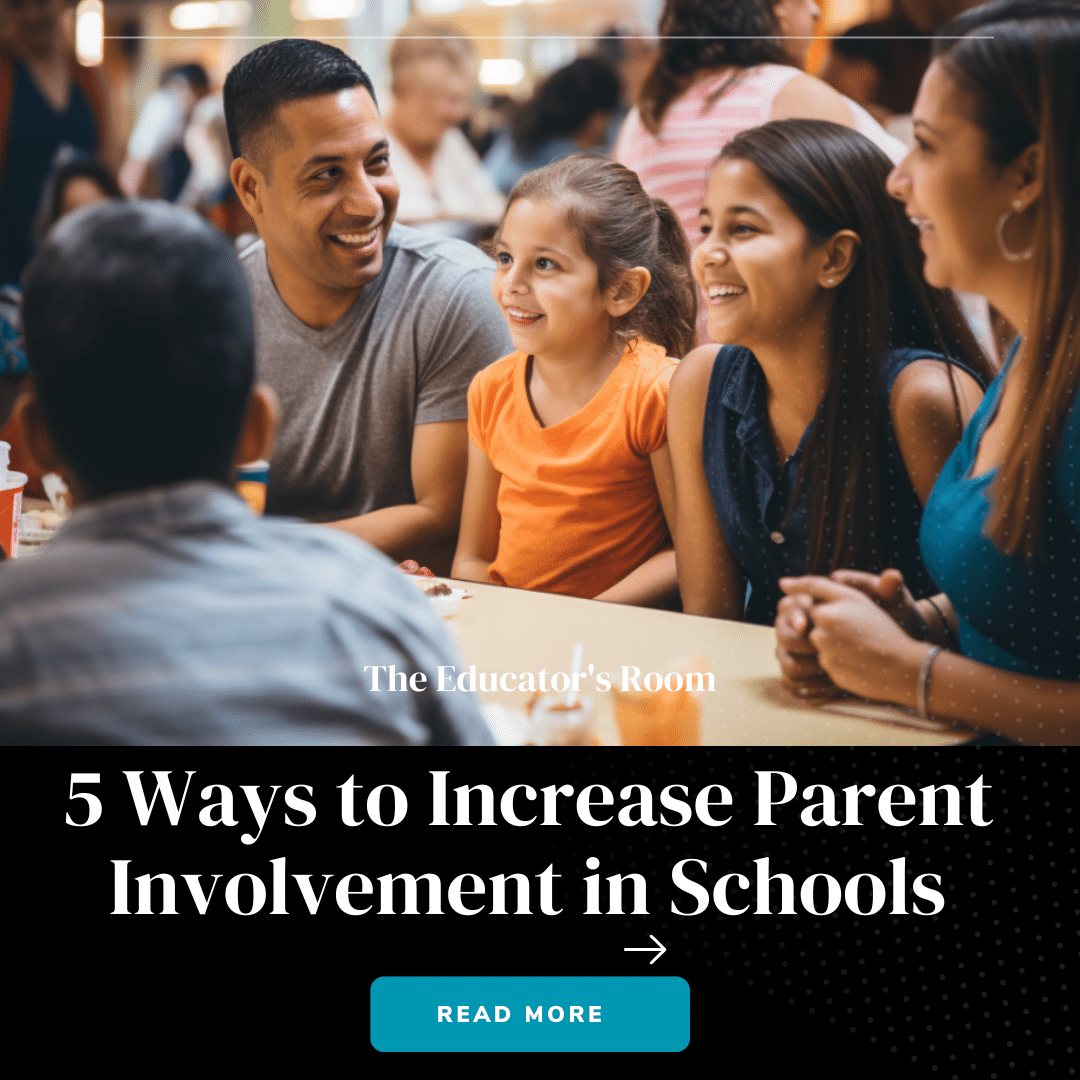I am fortunate to be uniquely positioned to be both a parent and a teacher. As a high school and college instructor, the world of elementary education is extremely new to me. I am also a mother who has jumped into the new terrain of raising an elementary-age child with neurodiversity. The boundless questions and quest for learning are a daily adventure. As I navigate the intersectionality of these uncharted experiences, I find that reflecting on the importance of parent involvement has become imperative to my journey to navigate both worlds successfully. This has not only helped to inform my own teaching but greatly impacted my experience as a parent as well. From these reflections have come five ways to increase parent involvement in schools from both perspectives.
Lean into Fostering Positive Relationships with Positive Phone Calls or Emails
As a teacher, I have had my share of phone calls to students regarding low grades or negative behavior. As a parent, I have not had many negative calls, but I still secretly dread any phone call from my son’s school, often anticipating the worst. I soon discovered that other parents often feel the same way. Positive phone calls are rare but have left a much greater impact.
On the teacher’s end, I knew that I needed to move these important first contacts with parents “beyond bad news.” One simple way to encourage a positive relationship is to begin the school year with a positive phone call or email to a parent. Many students take a few weeks to show the multiple aspects of their personalities. I have found that even my most challenging students often demonstrate commendable grades and behaviors at the beginning of the school year.
I remember calling a student’s parents in the first week of school. She answered the phone on the first ring with a clearly anxious tone.
“What did he do this time?” I was so surprised at her response but soon recognized the exasperated sound of a parent who had received more than her share of bad phone calls from teachers.
“I just wanted to let you know that your son was one of the only students in class who was able to pick up the signed alphabet in the first week without having any prior knowledge of American Sign Language. It was very impressive!”
I made several positive calls to parents that same day with many appreciative parents, but this one was different. I heard silence for a few seconds, followed by a slight sniffling sound.
“Hello?”
“I’m here, I’m just so shocked! I have literally never received a good phone call about my son from a teacher before!”
I found myself tearing up as well. Imagine having your blood pressure continually rise in anxiety-inducing anticipation of yet another negative phone call from a teacher. My heart ached at the thought of living in a dreaded state every time I saw a school’s number come across my phone.
“Thank you!”
“You are most welcome, ma’am.” Transparently, that student did indeed have multiple struggles with grades and behavior later in the year, but fostering that initial positive relationship with that parent helped us navigate that year with a positive mindset. I still maintained a great relationship with both that student and parent long after he graduated. From that experience, I also learned how important inviting students into my classroom was.
Start off the Year with an Open Classroom Policy
As a parent, there is nothing more refreshing than having a teacher extend a genuine invitation to visit my son’s classroom. I was so thankful to have the opportunity to visit my son’s second-grade class on several occasions. My husband and I also attended every field trip. We developed a rapport with his teacher that was one of the main factors that contributed to our son having the best year of his short in-person elementary education experience.
As an educator, there is nothing more important than thinking about ways my student’s parents might better understand how my classroom works. If they had the opportunity to visit and see for themselves, this would be a much better collaborative experience for both the students and the parents. Everyone would be on the same page, not wondering what was happening in the classroom.
Like many teachers, I enjoy a sense of autonomy in my classroom. Be that as it may, I have had many conversations with parents who I know could benefit from watching the learning in person. Of course, school policies often require twenty-four hours’ notice before a parent is allowed in the classroom. Transparently, I always prepare my students for a visitor, even if it is as simple as letting them know someone will join our learning space. I encourage them to treat the day as normal. I try to get them to understand that they should not see it as a chance to “show off” or change in a way that does not feel like their authentic or “normal” class experience.
I remember one specific incident when a parent asked to visit all of her son’s classrooms. When my student expressed his displeasure with what he deemed as being “watched” for inconsistent behavior, another student said, “You’re lucky your mother even wants to know what you are doing at school!” While one student dreaded the day, another was jealous of the parent’s involvement, which they clearly interpreted as one that showed how much she cared. I remember that a short classroom visit helped develop one of my career’s best parent/teacher relationships. I also learned the power of positive communication, especially during my first interaction with parents regarding their students. During these conversations, I was also able to extend invitations to our Back to School Nights in hopes of parent involvement.
Use Back to School Night for More Than Just a Check-Off Box
In my first year of teaching, I remember a disgruntled veteran teacher telling me that I shouldn’t expect more than a handful of parents to attend Back to School Night. With the righteous indignation I would soon become known for, I vowed to change that myth. I asked my students why their parents didn’t attend.
“My parents have to work.” I couldn’t fight that battle.
“My parents don’t have time.” I wasn’t sure what to do with such an ambiguous statement.
“My Mom says she has to get dinner ready.” I had the answer I was looking for!
“What if there was food provided?” My students’ eyes lit up! I crafted a letter for everyone to take home the very next day. Whether the parents were able to come or not, I advised that I would give extra credit to anyone who got their parents to sign the letter or even send me an email acknowledging that they reviewed it. I learned the second strategy later in my career when I discovered how many parents got home from work after their kids went to bed and were often up before their kids went to school.
I spent over two hundred dollars on coffee, tea, juice, water, snacks like cookies and brownies, fruit, and charcuterie-type trays. I didn’t know what to expect, and as a teacher’s salary, I was making an expensive bet on this strategy. I was shocked when over half of my parents (literally over a hundred people) showed up to my Back to School Night! I obtained accurate contact information, set up parent conferences, and established the positive rapport I knew was essential for the parent/teacher relationships I needed to foster to help their child succeed in school.
Of course, other teachers scoffed and vowed never to spend that kind of money on such a thing, but I now had proof that those few hundred dollars were a worthy investment. Word quickly spread, and I soon had over an eighty percent attendance rate for Back to School Night- talk about parent involvement.
One parent brought her young son after picking him up from daycare. As the toddler feasted on cookies and Capri Suns, she thanked me for giving her a reason not to have to rush home and fix dinner for her family. I would later budget and set this money aside for every school year. During those impactful Back to School Night experiences, I also learned about how important it was to have in-person parent/teacher conferences and provide virtual options.
Utilize Zoom for After Hours Communication
If distance learning taught us nothing else, grace and flexibility are important. Zoom has been one of the many tools that have helped with parent involvement. While some educators discourage working after school hours, I have found the ability to pick up my son after school, decompress, and perhaps even begin homework to be a much less stressful experience than trying to have a parent meeting right after school. I have also had parents communicate the same on their end. Having a time after students and parents get home, chosen by the parents who can successfully juggle after-school activities and familial obligations, has been a collaborative effort that has worked well for both parties.
In my personal experience, the evening hours between 6 pm-8 pm have worked well for parents and have also worked well for my own family. Knowing that I have a thirty-minute meeting that the parents selected themselves has also helped to make sure that they will actually show up and not cancel. I can come straight home and begin my family obligations, prioritizing activities and working around the thirty-minute meeting. This has also allowed me to focus on helping my son with his homework, which can be a confusing and daunting task.
Provide Parents with More than Just Homework
I was so thankful to be able to have my son’s second-grade teacher not only welcome parents in her classroom but one who provides detailed answers to my questions about homework. She provided parent involvement resources to help reinforce strategies she was teaching, advice about my son’s struggles and ways to help him push through them, as well as resources to prepare him for what he might need in his journey to the next grade. I was also in the incredible position to have my son’s summer tutor, who also happened to be a credentialed special education teacher, provide me with not only standards but coherence maps.
As an educator, I am familiar with standards, but this was a new tool I had yet to encounter. I could focus on the standards and the strategies needed to build up to high school and college level understanding. My son’s tutor helped me realize that if parents were provided these maps as early as kindergarten, we would have a greater understanding of how the standards and strategies build yearly.
EdSource
This will help parents better understand the purpose of lessons and homework, have a greater understanding of some of the language used in assessments, and even have a better understanding of how to interpret some of the often ambiguous language used in report cards.
Reflection
I embrace my unique position of parent involvement to be both a parent and a teacher in education. It gives me a perspective looking from the inside out and the outside in. Even sitting on both sides of an Individualized Education Plan (IEP) meeting has opened my eyes to subtle nuances I would have never had the privilege to even contemplate without my unique perspective of experiencing this unique position as a parent/teacher dynamic. This reflection has afforded me the time to do the necessary self-work to truly put myself in the shoes of my student’s parents in the same way I ask my son’s teachers to do for me.
Barack Obama once said, “Empathy is a quality of character that can change the world.” My reflections on increasing parent involvement in schools have increased my empathy for both parties. I see you as a teacher. I see you as a parent. Learning how to co-exist in both worlds, I can now better see myself.







